I’m looking at a hovering watch. It splits into pieces above the table in front of me, exposing gears ticking underneath. My eyes move over glowing yellow dots, which expand into details: ad copy, indicating the Swiss watch’s inner workings and fine details.
I click my way through the glowing holographic display using my finger, and then I look at a heat map of all the places people’s eyes have looked the most: an indicator of how people look at the 3D watch hovering in front of me. (Or rather, a simulation of what the heat map could work like, I’m told.) This is a demo of Microsoft HoloLens running a “holographic storytelling” experience, a maze of rooms above the flagship Microsoft Store here in Manhattan.
Microsoft’s HoloLens is an odd duck in the already peculiar world of virtual and augmented reality tech. Unlike VR, which covers the eyes completely using goggles, HoloLens throws 3D simulations of holographic-style experiences into the real world. It’s something few technology companies are currently pursuing, and even fewer people have even experienced. You’ll be able to buy VR in many forms by mid-2016, but HoloLens isn’t intended for consumers yet: instead, it’ll arrive in a $3,000 developer edition early next year. But how do developers create apps for realistic 3D augmented reality, which Microsoft calls “mixed reality,” without ever having experienced it in the first place?
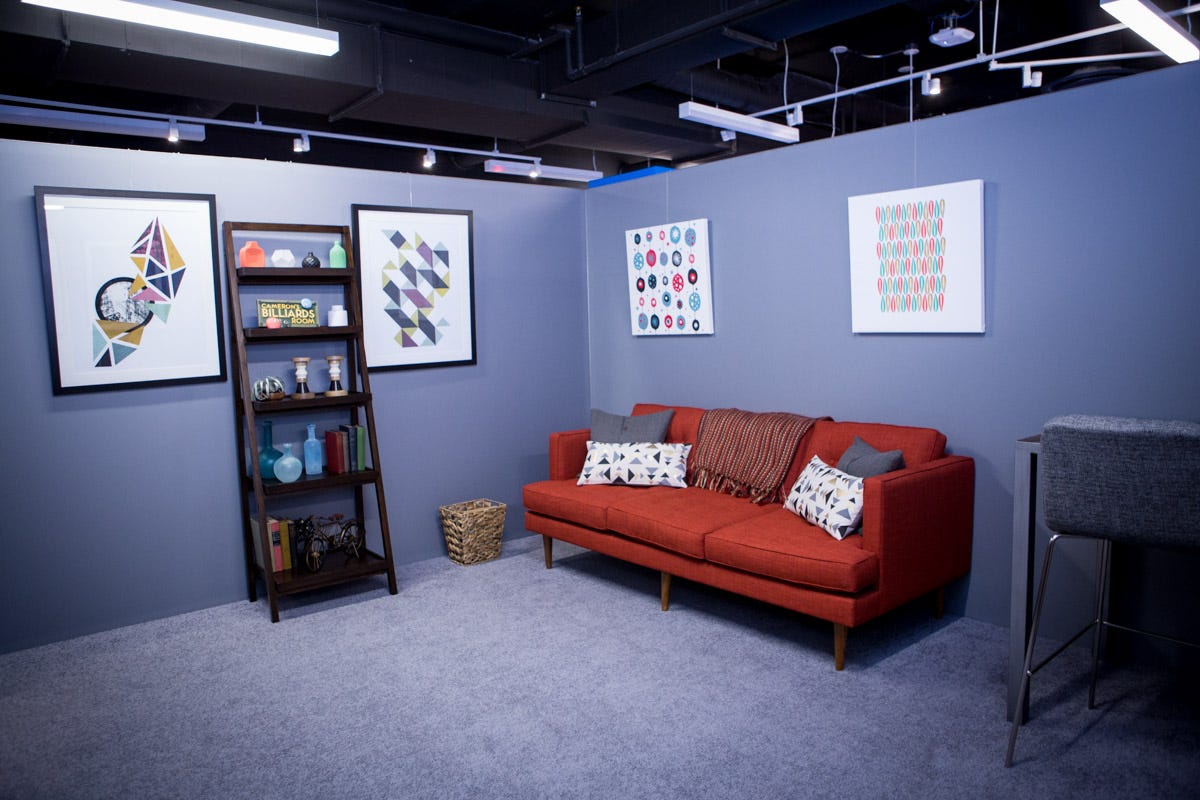

One of the demo rooms where HoloLens experiences are shown, to simulate a living room.
Microsoft
This chicken-and-egg HoloLens problem is what developer demos like Microsoft’s newly opened HoloLens showcase in New York are trying to solve. HoloLens has been slowly touring the world offering brief demonstrations, with appointments filling up quickly, Microsoft claims. This new showcase will stay open for appointments so that more developers can, at least, try demos and get a sense of what the whole mixed-reality thing is all about.
I got a chance to tour the space and try out all three demos currently being shown there. It replicates the type of small, rehearsed closed-room demos we often get at a press briefing: three mini living-room sets, decorated with sofas and wall art. Each one has a HoloLens unit, and the demo projects itself into that room to show how the virtual can mix with the real.
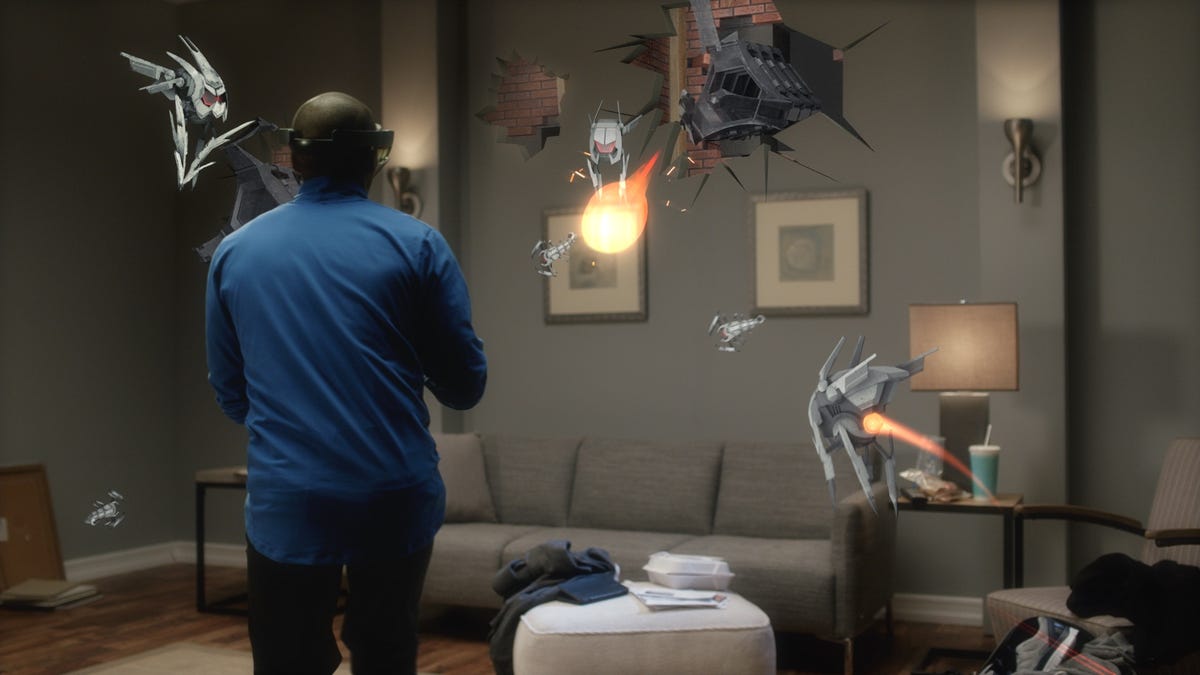

Microsoft’s depiction of Project X-Ray.
Microsoft
One demo is for Project X-Ray, a HoloLens game I tried earlier this year at the E3 video game expo in Los Angeles. The HoloLens headset I’m wearing scans the room with its 3D cameras, and a host of glowing-ghost robo-scorpions and drones burst from the walls for me to shoot with my head-mounted blaster. It uses an Xbox controller, showing how games can work in physical spaces.
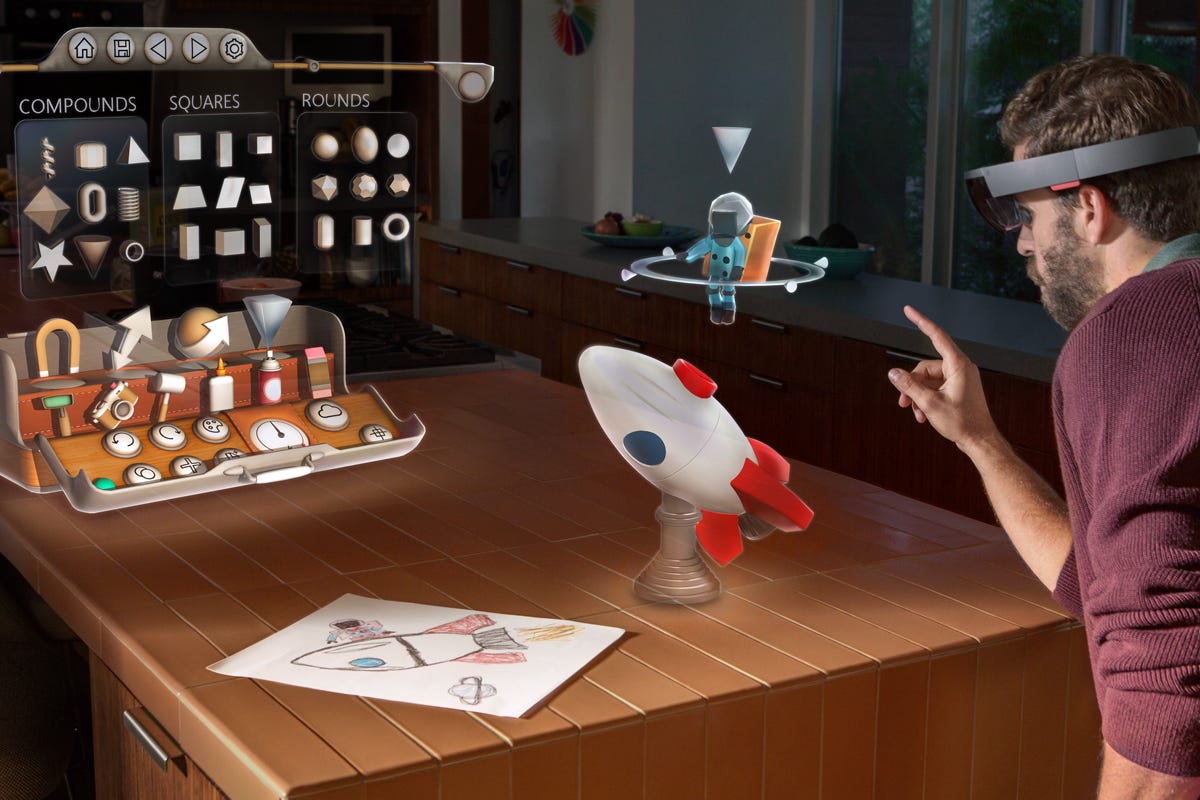

Again, this illustration of HoloStudio doesn’t exactly do the experience justice.
Microsoft
The second demo is for HoloStudio, Microsoft’s take on showing how 3D design can be done with a HoloLens headset. I missed this demo previously, so it was my first time trying. I opened a virtual paintbox and placed it, with my finger, against a wall. I put a 3D model of a small island lagoon complete with fish somewhere above the carpet. I air-clicked on fish, made them grow larger and smaller, and then I opened up a 3D model of an X-Wing fighter and started painting it day-glow pink and green.
After playing with the models, I’m invited to try “sending” the work to SketchFab, with which HoloLens’ development kit will be compatible next year. Or to a 3D printer, where I’m told that these 3D models could eventually be printed out. The idea is to take 3D design into a floating, holographic space.
It works, but with a lot of caveats and issues. The viewing area for HoloLens is still way too small for my tastes, which means these impressive, glowing, virtual hologram-type visions end up being boxed-off in a square hovering in front of my face. The interface is also quirky: air gestures don’t always work, and “placing” things in my actual real-life 3D space ends up having models half-in, half-out of floors or sofas (a room scan with the head-mounted cameras fixes things, somewhat, but issues persisted). Voice commands sometimes aren’t recognized. HoloLens doesn’t have a magic physical controller yet, like a wand, that could help make things work.
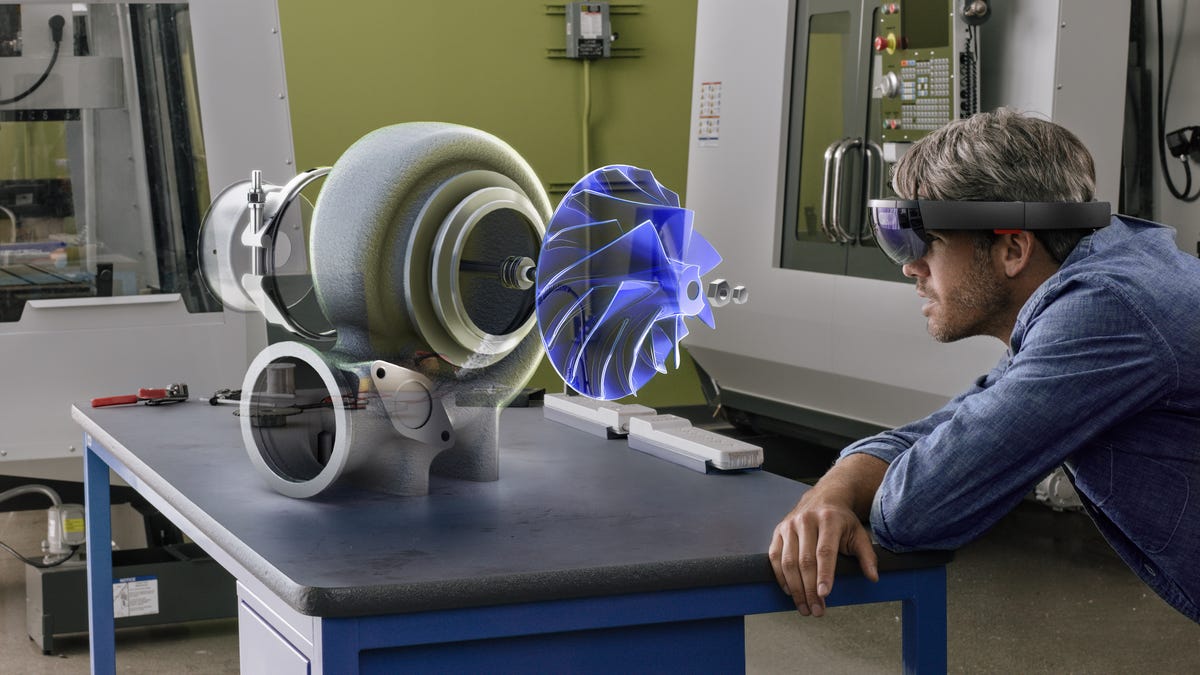

Microsoft’s imagining of holographic storytelling. No photos were allowed during the demonstration.
Microsoft
The third demo is a new one: it shows what Microsoft calls “holographic storytelling,” demonstrating how businesses, sales teams or other professionals could use HoloLens to build new ideas. It’s the demo I discussed above: a glowing Swiss smartwatch materializes on a square table in front of me like a futuristic store display, and my walk-around tour of it shows off how these types of images could be used for future stores, or product-planning corporate ad campaigns. The watch rendering looks cool, and I can even lower my head and hear the watch ticking next to me. It’s like listening to the heartbeat of a ghost. I see a PowerPoint-like slide deck control, which I can click through, and “edit” the presentation to add new features. An analysis of a glowing heat-map that shows where people looked at the watch the most becomes a guide of how to add new details.
After this, a neat 3D map rises from the table, showing the Seattle area and data on new retail store openings, as if I were in Star Wars, watching a corporate sales presentation for a new chain of sandwich restaurants on the Death Star. Then, a giant model of the solar system appears in the middle of the room. I’m invited to walk around it, duck under it, get close to the sun or back up and watch Neptune’s orbit. It feels like the room’s been turned into a virtual planetarium: an impressive demonstration, but again, I wish the solar system could be seen across my entire field of view. It’s too big for the HoloLens to fit in.
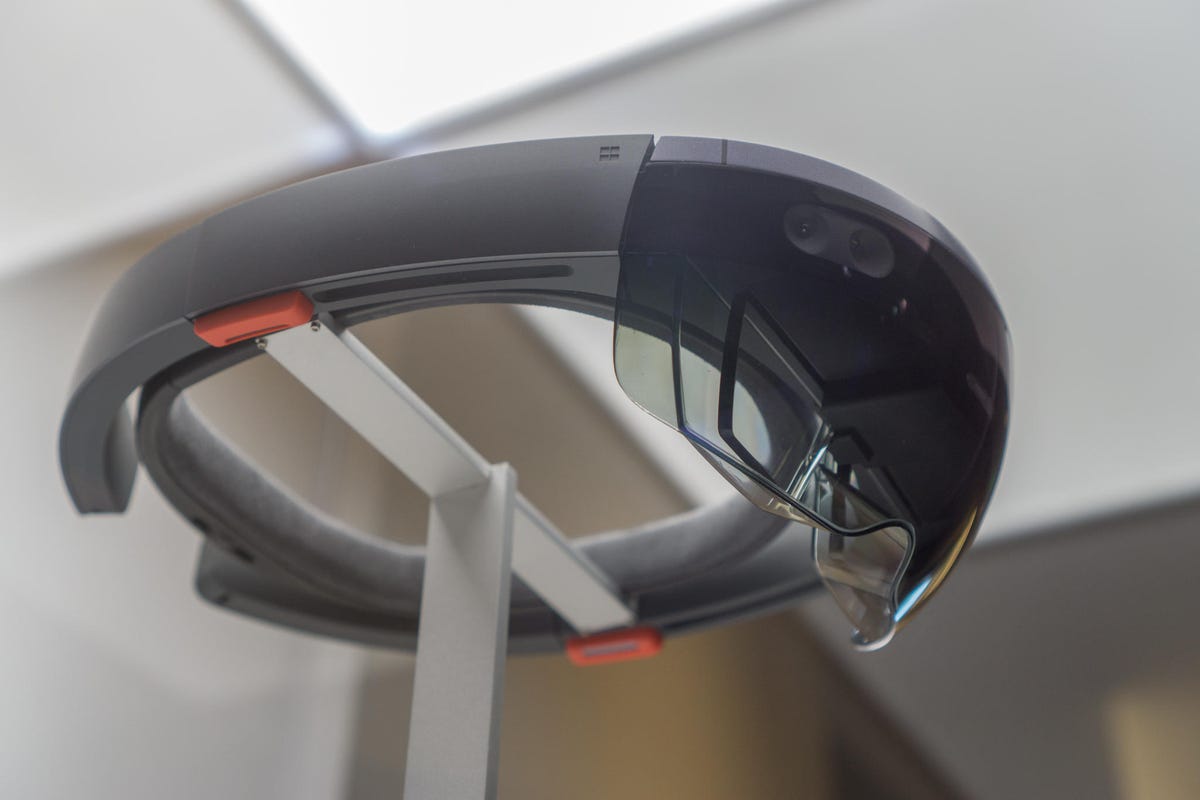

CNET
HoloLens has some impressive partners already lined up: Autodesk, Volvo, Sketchfab and NASA. Microsoft’s early explorations of mixed reality may feel weird or imperfect now, but augmented reality is moving past its early growth pains. The future is big, and wide-open. I just don’t know how many people, for now, will really need to experience it.
HoloLens still feels weird on my face: big, heavy and cumbersome. But the headset’s wireless, no small achievement, and this tech is in its very earliest days. It’s great that developers will get a chance to see all this too. What will they make of it all, and will it be easy to snag an appointment any time soon? Those are questions I can’t answer. But I’d be curious to see what the results are.



